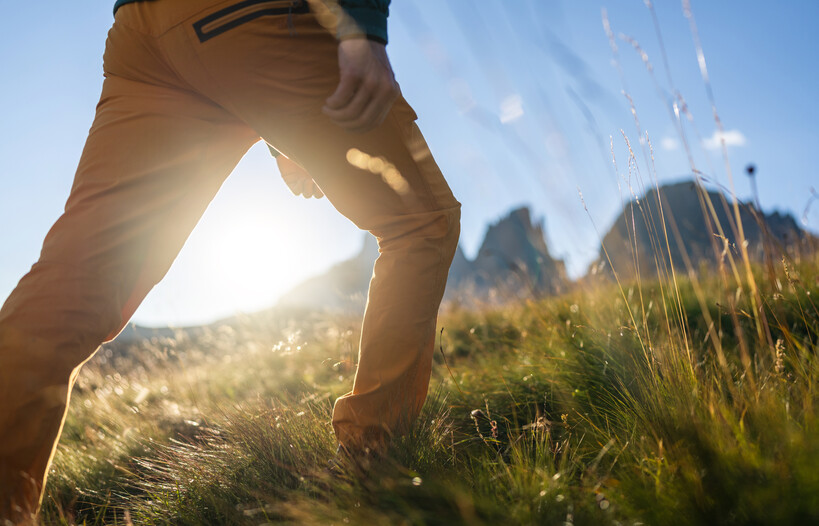At the school of freedom
Love is a simple thing
Private life in a mountain hut does not exist. So why since 2019 have Elisa Bettega and Piero Casagrande, a young couple in love, been managing and enjoying the Velo della Madonna mountain hut at the foot of Cima della Madonna, one of the most famous peaks of the Pale di San Martino Dolomite group, for four months a year?
The location is truly breathtaking! But it would not have been enough for them if, in the sum of their experience, they had not learned to say things to each other “thanks to the hut”.
“Up there, you are always together, - they explain - we have different ideas and different ways and yet we managed to do everything. You can’t afford the luxury of holding a grudge, you have to learn to talk to one another. It is certainly one of those tests that, had we not been forced to be together willy-nilly, after the first year we would have gone separate ways, putting as many kilometers between us as possible".
Elisa was born and raised in Primiero: “I am from Mezzano and have a somewhat particular history because I graduated in Biomedical Laboratory Techniques, that is, my academic training has absolutely nothing to do with what I do now. However, living in the area always led me one way or another to work in the hospitality business…”.
Piero is from Veneto: “I am from Valdobbiadene and for us Venetians, Primiero is the first mountain area we encounter heading north. I had been coming to this area since I received my driver’s license, mainly in winter to practice skiing. When I’m not in the hut, I work as a gardener. In terms of career, I never had a well-defined job. I have always lived off ski races, and the future I saw went as far as the next competition”.

What does it mean to participate in a tender for the assignment of a mountain hut?
“With social media, having access to the SAT (Tridentine Mountaineering Society)’s call for tender now is easier than in the past. Back then, you could only find it on notice boards or dedicated sections. We discovered it two days before the proposals were due. The first phase after release is very simple, because you apply by filling out a form in which you address what experience you have, your training, etc.., just basic things at the beginning. The only mandatory requirement to participate in the tender is to be a member of the CAI (Italian Mountaineering Club) or SAT, and to have familiarity with the hut location”.
The real evaluation phase begins after an initial selection of the submissions.
“They asked us to submit a management plan. We immediately started with the idea of the mountain hut as a home where hospitality, familiarity, simplicity, and local products were showcased and enhanced. Our idea of a mountain hut is a place where patrons can slow down. Our goal was to manage the hut a bit like it was done in the past. We thought we would not run into major problems, since the hut is not in an easily accessible place, but we were wrong."
Why?
“Because actually people come up, even if they are not totally fit for the hike. When you walk into a mountain hut, you see more or less a bar counter, a dining room which closely resembles that of a restaurant, and you find rooms with beds that are more or less like those of a hotel.., but you know that it is not the same thing. In a mountain hut there are many problems that those who go to the mountains already know and know how to tackle. With those who come to the hut with the attitude of the type I want, I demand because I pay, everything becomes more complicated.
For us, the hut is a place where anyone is welcomed, we do everything possible to meet every need, but our primary goal is to provide a place that is warm, dry, clean and welcoming. There are people, however, who spend all their energy looking for the negative side of things and do not enjoy the experience of the place, which alone would be enough to make you feel good. Eating and sleeping all together is also part of the beauty of the hut.
But sometimes you see people focusing on expressing discomfort with respect to standards that cannot be met in a mountain hut. Even a hut manager cannot think of going to a mountain hut and working there as if he were in a valley bar or in a hotel. You can’t just try to collect as many patrons as possible, you must also be able to direct tourists or mountaineers and cater to them."
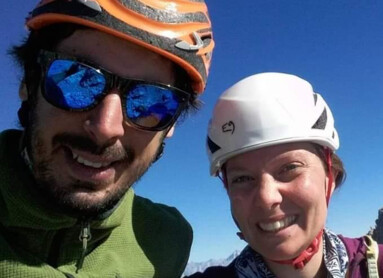
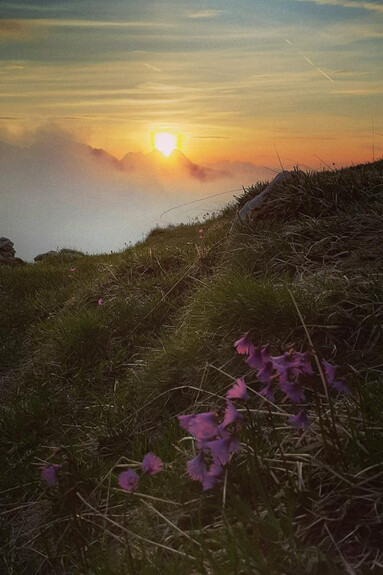
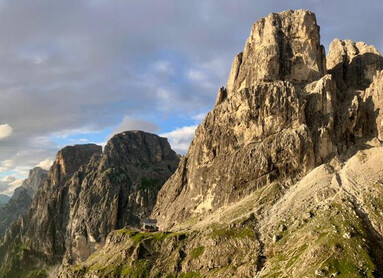


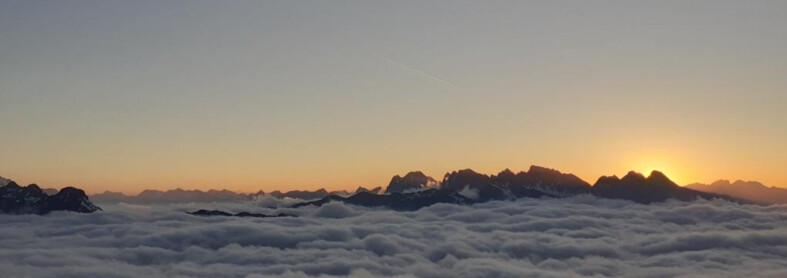
In 2019, you began managing the hut, then, in 2020, Covid broke out...
“COVID caught us off guard, but also brought many more people to the mountains, both experienced and not. If I am going to a place where I do not know what to expect, it is essential to pay attention to avoid risks. In a mountain hut, you cannot expect a single room, because my goal is to ensure that all guests have a place to sleep, if they want to. Whenever possible, of course, we do our best to meet everybody’s needs.
We generally work from Sunday to Friday with 4 to max 10 people in the evening. The problem is Saturday. During the week, you can put a couple in a single room, but when the hut is full, is full. Here, Covid has given the opportunity to many more people to get to know the mountains, but it takes some time to gain knowledge and experience.
The mountain is a place of peace and freedom, but people need to be educated about it. You can’t learn about the mountains in 10 days or in an online course or on a piece of paper with 10 rules written on it. You need experience to reach increasingly challenging huts, knowing that your fatigue is to be shared with the manager’s fatigue in guaranteeing you a hot tea. Then there will always be those who are convinced that whoever gives you a service must be at your service. Those people will never be satisfied, so be it."
So, who is a mountain hut manager for you?
“The mountain hut manager is a lucky person, free, because being able to live up there means getting away from the noise and the normal hustle and bustle of city life. Our days begin at high speed at six in the morning and end at even higher speed at 11.00 pm, but all the work you do up there is defined by times that are not those marked by a watch, but by the environment and context around you.
If something breaks, you have to make friends with the idea that it cannot be fixed right away: if we have to wait, we wait. Unexpected things also happen in the kitchen and it comes a point when you have to admit that you have done all you could, you do all you possibly can and can do nothing else but wait.
It’s hard, tiring work... keeping the facility efficient, whether it’s the kitchen, the cableway connection, or checking the water on the roof. When you have taken care of all these issues and the hut returns to the silence you experience at six in the morning, you are at peace, you feel free and lucky."
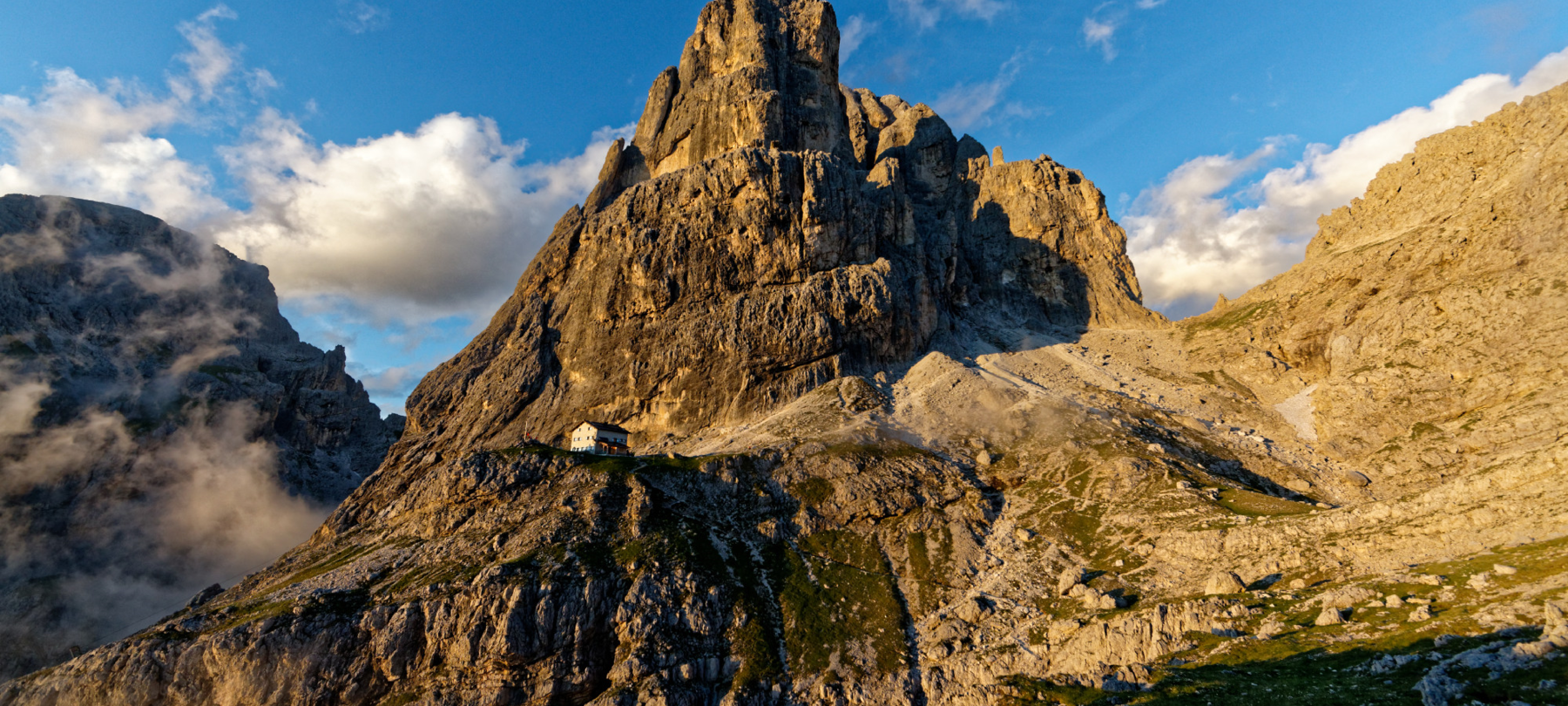
In each other’s company, you never suffer from loneliness...
“We really like that sense of loneliness or isolation. But, in any case, in the hut it is always the two of us plus at least one or two people; for this reason, we are never really alone. Probably the most difficult part is not the loneliness, but forced coexistence. Even for those working with us, it is not easy to meet a person for the first time in May and then live together with him or her for three months. You are not always compatible. If you don’t like someone, you have to live with them until the end of the season. You have to find a way to put up even with things that you might not stand down here. So, when you have something to say, you have to say it right away and if someone gives you an earful, you have to let it go or fix it right away."
You have been together for seven years, what have you learned about each other up there?
Elisa: “We are very different from each other. In life down here I am more introvert, if I have a problem, I keep it to myself and then maybe explode later. He lets things out more."
Piero: “Elisa has learned to practice patience and to solve problems, because in the hut you have to roll up your sleeves and, in one way or another, you have to solve problems. You have to let go of what has to go. There are things you can’t do anything about. Like lack of water, there is nothing we can do about it. We have possible solutions, but they are not necessarily feasible. So you learn to wait."
Elisa: “Piero has the creativity to find solutions. Plant engineering, water management, electricity. He can do a lot of things. He was lucky enough to have his hands into many pies. Because a mountain hut is a house, with generators, systems, …as a gardener he already works with all these things, and has talents for many others. And for things that do not have an immediate solution, we wait.”
What would you never give up?
Elisa: “To stay in the hut, get up in the hut, wake up and have the mountains right there.”
Piero: “The best thing is to be up there. I haven’t given up much. Unlike Elisa, who loves summer and doesn’t enjoy it as free time, I have the advantage that my favorite season is winter. I can do without beers, but not without skiing.”
Have a nice summer, folks!
